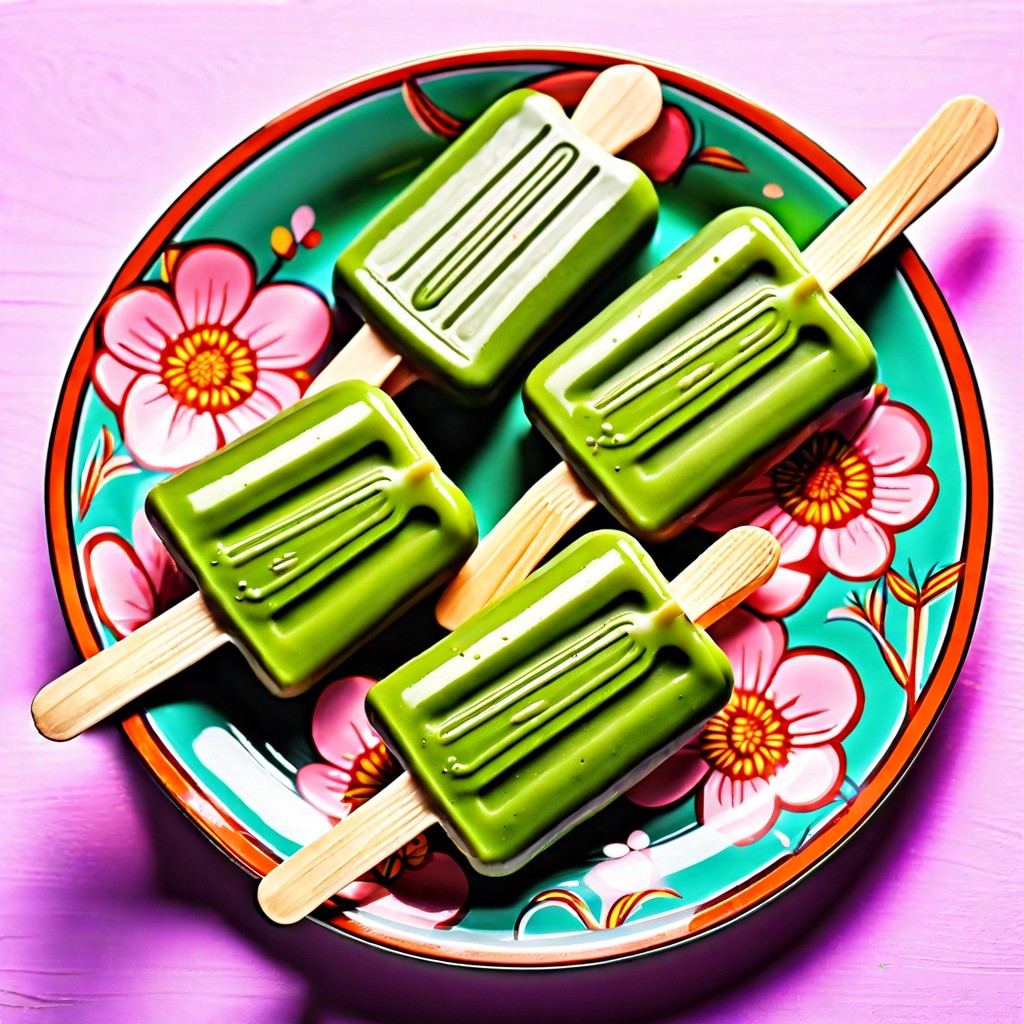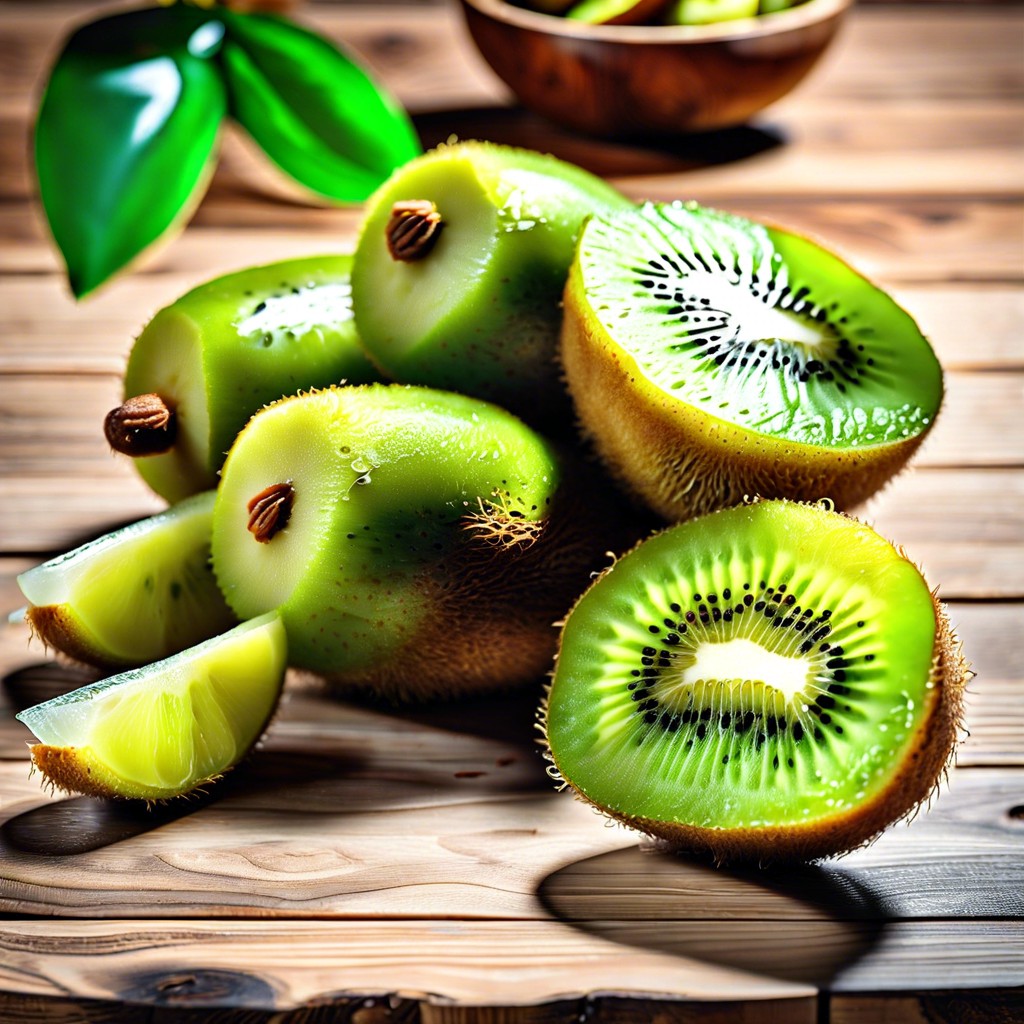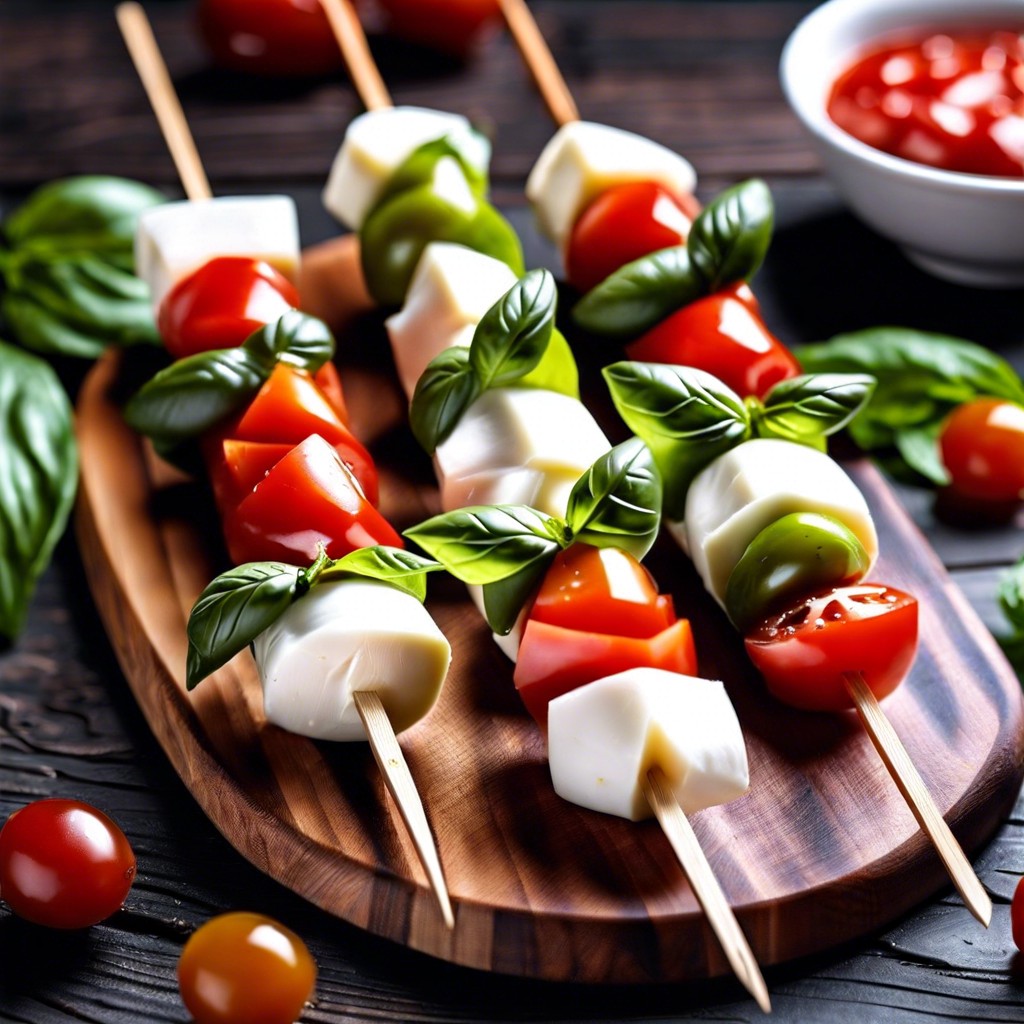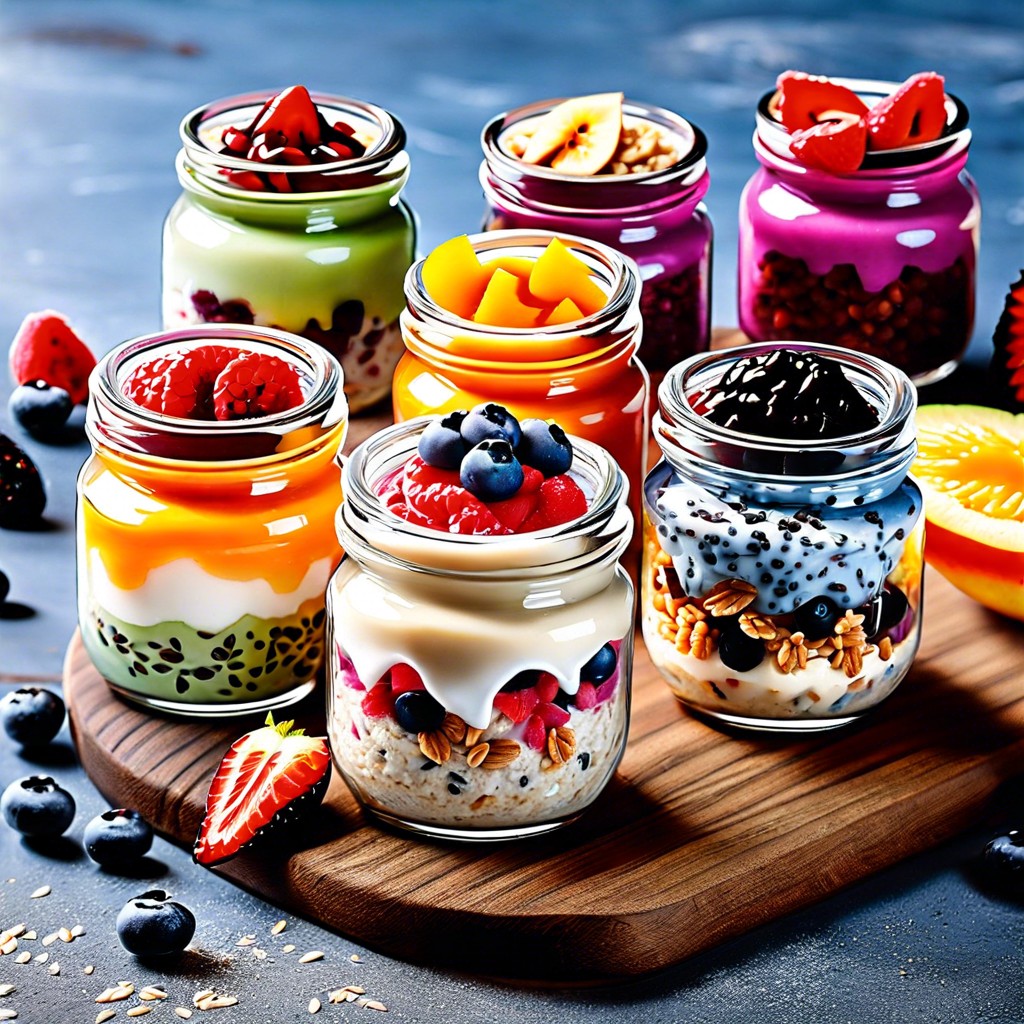A cold appetizer is a type of starter dish served chilled, usually consisting of various ingredients like vegetables, fruits, meats, or seafood. It is meant to stimulate the appetite before the main course in a meal.
When it comes to appetizers, we often think of hot and sizzling dishes that whet our appetite for the main course. But have you ever tried a cold appetizer? These dishes are just as delicious and refreshing, and they can be the perfect way to start off a meal on a hot summer day or at a fancy dinner party.
In this article, we’ll explore what cold appetizers are, their benefits, and some popular examples that you can try out at your next gathering. So sit back, grab a snack (hot or cold!), and let’s dive in!
Definition of Cold Appetizer
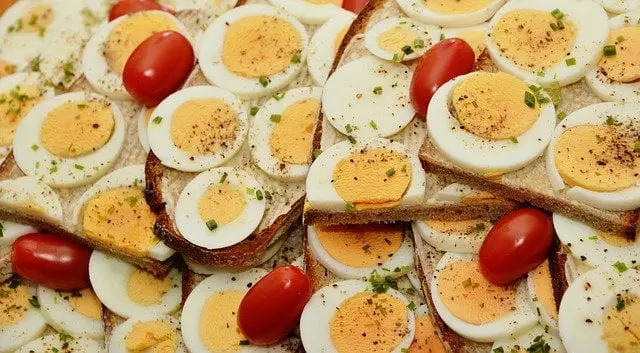
A cold appetizer is a dish that is served chilled and meant to be eaten before the main course. It can consist of various ingredients, such as vegetables, fruits, meats or seafood.
The purpose of a cold appetizer is to stimulate the appetite and prepare your taste buds for what’s coming next in your meal.
Cold appetizers are often refreshing and light on the stomach compared to their hot counterparts. They are perfect for summer gatherings or when you want something quick but satisfying without having to turn on an oven or stove.
Some examples of popular cold appetizers include shrimp cocktail, bruschetta with fresh tomatoes and basil, smoked salmon crostini with cream cheese spread over toasted bread slices topped with capers & red onions; hummus dip served alongside pita chips & veggies like carrots sticks cucumber slices etc., gazpacho soup made from blended raw vegetables like tomatoes peppers cucumbers garlic onion celery etc., crab cakes made from lump crab meat mixed together with breadcrumbs mayonnaise mustard Worcestershire sauce egg white salt pepper parsley chives lemon juice zest etc.
Types of Cold Appetizers
Some of the most popular options include seafood starters like shrimp cocktail or ceviche, vegetarian selections such as hummus and tzatziki dips with pita bread or vegetable crudités, charcuterie boards featuring cured meats and cheeses with crackers or bread slices.
Cold soups like gazpacho can also be a refreshing option on a hot day. Salad-based appetizers such as caprese skewers made with fresh mozzarella cheese and cherry tomatoes drizzled in balsamic glaze are another great choice.
Bruschetta and crostini topped with various ingredients like tomato-basil salsa, smoked salmon spread, or roasted red pepper hummus make for an elegant yet simple starter dish that is sure to impress your guests.
Cheese platters offer endless possibilities for pairing different types of cheeses along with fruits, nuts, honeycomb spreads over crackers. Crudité platters filled up colorful vegetables arranged beautifully on a plate can add freshness while being healthy at the same time!
Popular Cold Appetizer Recipes
Here are some popular recipes that you can try out at your next gathering:
1. Caprese Skewers: These simple yet elegant skewers consist of cherry tomatoes, fresh mozzarella balls, and basil leaves drizzled with balsamic glaze.
2. Shrimp Cocktail: A classic seafood starter that never goes out of style! Serve chilled shrimp with cocktail sauce and lemon wedges.
3. Gazpacho Shots: This Spanish soup is served in shot glasses for a fun twist on the traditional recipe.
It’s made with blended vegetables like tomatoes, cucumbers, peppers, onions mixed with olive oil and vinegar.
4. Deviled Eggs: Hard-boiled eggs filled with a creamy mixture of mayonnaise mustard paprika salt pepper Worcestershire sauce topped off by chives or bacon bits.
5. Cucumber Bites: Sliced cucumber rounds topped off by cream cheese spread garnished by smoked salmon dill sprigs.
Cold Seafood Starters
These dishes are refreshing and light, making them perfect for hot days when you don’t want to eat anything heavy. Some of the most common cold seafood appetizers include shrimp cocktail, ceviche, oysters on the half shell, and smoked salmon.
Shrimp cocktail is a classic dish that has been around for decades. It consists of cooked shrimp served with a tangy sauce made from ketchup and horseradish.
Ceviche is another popular option that originated in Latin America; it’s made by marinating raw fish or shellfish in citrus juice until it “cooks” through acid denaturation.
Oysters on the half shell are an elegant choice that can be served plain or with various toppings like mignonette sauce or cocktail sauce. Smoked salmon is also a crowd-pleaser; it’s often paired with cream cheese and bagels at brunches but can also be used as an ingredient in other dishes like sushi rolls.
When choosing cold seafood starters to serve at your next gathering, consider your guests’ preferences regarding texture (e.g., raw vs cooked) and flavor (e.g., spicy vs mild).
Vegetarian Selections
Cold appetizers offer a wide range of vegetarian choices that are both delicious and satisfying. One popular choice is the classic Caprese salad, which consists of fresh mozzarella cheese, sliced tomatoes, and basil leaves drizzled with olive oil and balsamic vinegar.
Another tasty option is hummus served with pita bread or vegetables like carrots and cucumbers for dipping.
For something more unique, try making avocado toast topped with cherry tomatoes or roasted red peppers. Or create a colorful platter filled with marinated artichokes, olives, roasted bell peppers, sun-dried tomatoes along with some crusty bread on the side.
Charcuterie Boards
These boards typically consist of an assortment of cured meats, cheeses, crackers or breads, fruits and nuts. The beauty of charcuterie is that it can be customized to suit any taste preference or dietary restriction.
When creating your own charcuterie board, start by selecting a variety of meats such as prosciutto, salami and ham. Then add in different types of cheese like brie and cheddar along with some fresh fruit like grapes and berries to balance out the flavors.
To make your board visually appealing consider adding some colorful vegetables such as cherry tomatoes or sliced bell peppers. You can also include dips like hummus or mustard for added flavor.
Cold Soup Options
They can be made with various ingredients like vegetables, fruits, or even yogurt. Some popular cold soup options include gazpacho from Spain, vichyssoise from France and cucumber soup from Russia.
Gazpacho is a classic Spanish dish that originated in Andalusia. It’s made with ripe tomatoes, cucumbers, bell peppers and onions blended together to form a smooth puree.
The addition of bread crumbs gives it thickness while olive oil adds richness to its flavor.
Vichyssoise is another famous cold soup that hails from France but was invented by an American chef named Louis Diat who worked at the Ritz-Carlton hotel in New York City during the early 1900s. This creamy potato-leek soup is served chilled and garnished with chives or croutons.
Cucumber Soup is a light yet flavorful Russian recipe that combines fresh cucumbers with dill weed for added aroma and taste.
Salad-Based Appetizers
These dishes can be served as a light starter or even as a main course for those who prefer lighter fare. One popular salad-based appetizer is the classic Caprese salad, which consists of sliced tomatoes, fresh mozzarella cheese, and basil leaves drizzled with olive oil and balsamic vinegar.
Another delicious option is the Greek Salad that features crisp lettuce greens topped with feta cheese crumbles, Kalamata olives, cucumbers slices and cherry tomatoes dressed in lemon juice vinaigrette.
For something more unique try an Asian-inspired cold noodle salad made from soba noodles tossed in sesame oil dressing along with shredded carrots ,cucumber ribbons ,edamame beans garnished with chopped peanuts.
Salad based-appetizers offer endless possibilities for customization according to taste preferences or dietary restrictions such as gluten-free or vegan options. They also provide an opportunity to experiment creatively by incorporating different textures like crunchy nuts or creamy avocadoes.
Bruschetta and Crostini
They consist of toasted bread slices topped with various ingredients, such as tomatoes, cheese, cured meats, or spreads. Bruschetta is typically made with rustic bread rubbed with garlic and drizzled with olive oil before being grilled or toasted until crispy.
Crostini is a smaller version of bruschetta made from thin slices of baguette.
These simple yet flavorful bites can be served as an elegant starter at any occasion – from casual gatherings to formal events. The toppings for bruschetta and crostini are endless; you can get creative by using seasonal produce or experimenting with different flavor combinations.
Some popular variations include tomato-basil bruschetta topped off with fresh mozzarella cheese; roasted red pepper spread on crostini garnished with olives; goat cheese mixed in honey on top of sliced figs for a sweet-savory twist; smoked salmon paired up cream cheese on rye toast points for an upscale touch.
When it comes to serving these delicious appetizers, presentation matters! Arrange them neatly on a platter or board so that guests can easily pick them up without making a mess. You could also add some fresh herbs like basil leaves to give your dish some color contrast while adding extra flavor notes.
Cheese Platter Ideas
They can be customized to suit any taste, budget, or occasion. When creating a cheese platter, it’s important to consider the variety of cheeses you want to include.
A good rule of thumb is to choose at least three different types: one soft cheese like brie or camembert, one hard cheese like cheddar or gouda, and one blue-veined cheese like Roquefort or Stilton.
To add some color and texture to your platter, you can also include fruits such as grapes or sliced apples; nuts such as almonds or walnuts; crackers; breadsticks; olives; honeycomb drizzled with honey – the possibilities are endless! You may also want to consider pairing your cheeses with specific wines that complement their flavors.
When arranging your platter on a serving board (wooden boards work great), start by placing the larger items first – in this case it would be the cheeses themselves – then fill in gaps with smaller items until everything looks balanced and visually appealing. Don’t forget about labeling each type of cheese so guests know what they’re trying!
Crudité Platter
These platters typically consist of raw vegetables like carrots, celery, cucumbers, and bell peppers that are cut into bite-sized pieces and arranged on a serving tray. They can be served with various dips such as hummus or ranch dressing to add flavor.
One of the benefits of serving crudité is that it’s a healthy option compared to other appetizers that may be high in calories or fat. It’s also an excellent way to incorporate more vegetables into your diet while still enjoying delicious flavors.
When preparing your crudité platter, consider adding some unique vegetable options like jicama or radishes for added variety and color. You can also experiment with different dip recipes such as tzatziki sauce or roasted red pepper hummus for something new and exciting.
International Favorites
From the Mediterranean to Asia, there is no shortage of international favorites to choose from. For example, in Greece, you can find Tzatziki – a creamy dip made with yogurt and cucumber served with pita bread or vegetables.
In Japan, Sashimi – thinly sliced raw fish served with soy sauce and wasabi is a popular choice for sushi lovers.
In Italy, Bruschetta – toasted bread topped with fresh tomatoes and basil drizzled in olive oil is an all-time favorite antipasto dish that’s easy to make at home. And let’s not forget about Hummus from the Middle East- chickpea-based spread seasoned with garlic lemon juice.
Gluten-Free Choices
Fortunately, there are plenty of delicious and creative gluten-free options available for cold appetizers. One popular choice is using rice paper wrappers to make fresh spring rolls filled with vegetables and protein like shrimp or tofu.
Another option is serving hummus with sliced veggies instead of pita bread.
If you’re looking for something heartier, try making quinoa salad bites by mixing cooked quinoa with chopped veggies like cucumber and tomato, then spooning the mixture into endive leaves for a crunchy bite-sized snack.
You can also get creative by using alternative flours in your recipes such as almond flour or coconut flour when making savory tartlets or mini-quiches.
When preparing gluten-free cold appetizers it’s important to read labels carefully and avoid cross-contamination from other ingredients that may contain wheat-based products.
Vegan Cold Appetizers
Fortunately, there are plenty of delicious cold appetizer options that cater to this dietary preference. One example is the classic bruschetta made with fresh tomatoes, garlic, basil and olive oil served on toasted bread slices.
Another option is hummus paired with pita chips or vegetable sticks for dipping.
For those who prefer something more substantial, try making vegan sushi rolls filled with avocado or cucumber instead of fish. Or how about a refreshing watermelon salad topped off with mint leaves? The possibilities are endless when it comes to creating tasty vegan cold appetizers.
When preparing these dishes at home or ordering them at restaurants be sure to check the ingredients list carefully as some may contain animal products such as dairy or eggs which would not be suitable for vegans.
Dietary Restrictions
Cold appetizers can be a great option for accommodating various dietary needs since they often include fresh fruits and vegetables, lean proteins, and gluten-free options. For those who are vegetarian or vegan, there are plenty of cold appetizer recipes that use plant-based ingredients like hummus or avocado toast.
If you have guests with nut allergies or other food sensitivities, make sure to label any dishes that contain potential allergens so they can avoid them.
It’s also worth considering the overall nutritional value of your cold appetizers when planning your menu. While many traditional starters may be high in calories and fat content due to their fried nature (think mozzarella sticks), there are plenty of healthier options available as well! Opting for seafood-based starters like shrimp cocktail or smoked salmon crostini is an excellent way to incorporate lean protein into your meal while still keeping things light.
Pairing With Beverages
First and foremost, you want the flavors of your drink and food to complement each other. For example, if you’re serving a seafood-based cold appetizer like shrimp cocktail or ceviche, consider pairing it with a crisp white wine or light beer that won’t overpower the delicate flavors of the dish.
On the other hand, if you’re serving something more robust like charcuterie board featuring cured meats and cheeses, opt for red wine or even whiskey as they can stand up well against strong flavors.
Another thing to consider is temperature – while your appetizers may be served chilled; some drinks might taste better at room temperature. So make sure that both your food and beverage are at their optimal temperatures before serving them together.
Presentation Tips
Not only do they need to taste good, but they also need to look appealing and inviting. Here are some presentation tips that can help you make your cold appetizers stand out:
1. Use colorful ingredients: Incorporate a variety of colors in your dish by using different fruits, vegetables, or meats.
2. Play with textures: Mix crunchy and soft elements together for an interesting texture contrast.
3. Use unique serving dishes: Instead of traditional plates or bowls, try serving on slate boards or wooden platters for a rustic feel.
4. Garnish with herbs: Add fresh herbs like basil or parsley as a finishing touch for added flavor and visual appeal.
5. Keep it simple: Don’t overcrowd the plate; leave enough space between each item so that the individual components can be appreciated separately while still working together as a whole dish.
Seasonal Suggestions
In the summer months, light and refreshing options like gazpacho or watermelon salad are perfect for beating the heat. Fall brings an abundance of harvest vegetables that can be used in creative ways for appetizers such as roasted beet hummus or butternut squash crostini.
Winter is all about comfort food, so why not try serving up some warm dips like spinach and artichoke dip with pita chips? And during springtime when everything is blooming again, fresh herbs and greens make great additions to salads or bruschetta toppings.
By keeping seasonal ingredients in mind when planning your cold appetizer menu, you’ll not only ensure that your dishes taste their best but also impress your guests with thoughtful choices that reflect the time of year.
Theme-Based Menus
For example, if you’re throwing a beach-themed party, consider serving seafood-based starters like shrimp cocktail or ceviche. Or if you’re having an Italian-inspired dinner party, bruschetta and antipasti platters would be perfect choices.
Another idea is to create regional menus that showcase the cuisine of different countries or regions. You could have a Mediterranean menu featuring hummus and tzatziki dips with pita bread, Greek salad skewers with feta cheese and olives, stuffed grape leaves (dolmades), and Spanish gazpacho soup.
For those who prefer something sweeter for their cold appetizer selection at dessert parties or brunches; fruit platters are always popular options as well as yogurt parfaits topped with granola & berries.
Storage and Serving
Most of these dishes can be prepared in advance, making them a convenient option for hosting parties or events. However, you need to ensure that they are stored correctly before serving.
One essential tip is always to keep the ingredients chilled until ready for use. This means storing them in the refrigerator or cooler until you’re ready to assemble your dish.
Another important factor is presentation – how you serve your cold appetizer can make all the difference! Consider using attractive platters or bowls that complement your food’s colors and textures. You could also add some garnishes like fresh herbs or edible flowers for an extra pop of color.
Don’t forget about timing when it comes time to serve! Cold appetizers should be served immediately after assembly so that they remain at their optimal temperature and texture. If possible, try not leaving them out at room temperature for too long as this may cause spoilage.
By following these simple tips on storage and serving techniques, you’ll ensure that your guests enjoy deliciously fresh-tasting cold appetizers every time!
FAQ
What is the meaning of cold appetizer?
Cold appetizers are light, tasteful, and never spicy dishes designed to stimulate digestion, increase appetite, and engage customers before the main dish arrives.
What is the difference between hot and cold appetizers?
The difference between hot and cold appetizers is that cold appetizers are served at lower temperatures, while hot appetizers are served at higher temperatures.
What are some popular examples of cold appetizers from different cuisines?
Some popular examples of cold appetizers from different cuisines include Italian bruschetta, Spanish gazpacho, Chinese cold sesame noodles, and Middle Eastern hummus.
How can cold appetizers be presented creatively for a party or gathering?
Cold appetizers can be presented creatively for a party or gathering by using unique plating techniques, incorporating vibrant colors and textures, and arranging them in visually appealing patterns or designs.
What are some healthy and plant-based options for cold appetizers?
Some healthy and plant-based options for cold appetizers include: hummus with vegetable sticks, fresh fruit skewers, guacamole and salsa with whole-grain crackers, and chilled gazpacho shooters.
